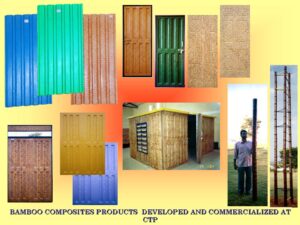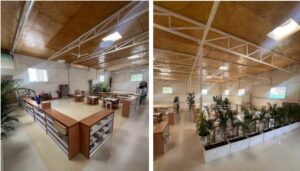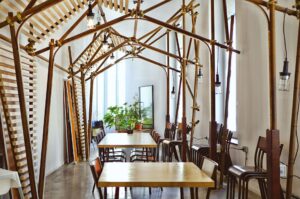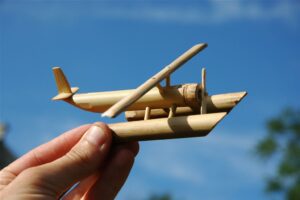The demand for sustainable building materials has driven architects, interior designers, and manufacturers to explore alternatives that combine strength, aesthetics, and eco-consciousness. Among the emerging materials, Bamboo Laminated Plywood in the 9–25 mm thickness range stands out as an innovative and high-performance option. Designed through advanced lamination of bamboo mats with phenol-formaldehyde resin, this plywood provides exceptional mechanical strength, moisture resistance, and dimensional stability—making it a viable replacement for traditional hardwood panels.
What Is Bamboo Laminated Plywood?
Bamboo Laminated Plywood is an engineered composite material created by bonding multiple layers of resin-treated bamboo mats under high temperature and pressure. The cross-laminated structure gives it superior tensile and compressive strength compared to many conventional plywoods and hardwood boards.
According to technical specifications, the product is available in thicknesses ranging from 9 mm to 25 mm with an approximate density of 950 kg/m³. It offers uniform mechanical properties, a smooth finish, and resistance to moisture and biological degradation.
These characteristics make it ideal for structural, architectural, and furniture applications where durability, sustainability, and appearance are equally important.
Key Properties of Bamboo Laminated Plywood (9–25 mm)
1. High Density and Strength
The material’s density (around 950 kg/m³) gives it remarkable load-bearing capacity and impact resistance, often exceeding that of hardwood panels of similar thickness. It is suitable for heavy-duty furniture, flooring bases, and wall systems.
2. Moisture and Boil Water Resistance
The bamboo veneers are impregnated with phenolic resin, which provides excellent resistance to water, humidity, and temperature changes. This property makes the plywood suitable for both indoor and semi-exposed environments.
3. Termite and Fungus Resistance
The natural silica and resin content of bamboo, combined with phenolic treatment, makes the plywood resistant to termite attacks and fungal decay—an advantage over traditional wood-based panels.
4. Dimensional Stability
Due to its cross-laminated structure, the plywood maintains dimensional stability even under fluctuating humidity and temperature, minimizing warping, delamination, or shrinkage.
5. Thermal and Acoustic Insulation
Bamboo’s cellular structure provides inherent insulation properties, making the plywood effective at reducing sound transmission and maintaining thermal comfort.
6. Eco-Friendly Composition
Bamboo grows rapidly, reaching maturity in 3 to 5 years, unlike hardwoods that take decades. This makes bamboo plywood an environmentally responsible alternative for furniture and construction projects.
Technical Specifications (as per product data)
| Parameter | Specification | Performance Benefit |
|---|---|---|
| Thickness Range | 9 mm – 25 mm | Suitable for various structural and decorative uses |
| Density | ~950 kg/m³ | High strength-to-weight ratio |
| Water Resistance | Boil-water proof | Reliable for humid environments |
| Termite/Fungus Resistance | Yes | Long life and low maintenance |
| Finish | Smooth, uniform texture | Ready for painting or polishing |
| Workability | Excellent | Can be cut, drilled, and joined easily |
| Thermal Conductivity | Low | Provides insulation and comfort indoors |
Applications of Bamboo Laminated Plywood
1. Furniture Manufacturing
Its high strength and attractive grain pattern make bamboo laminated plywood ideal for tables, cabinets, bed frames, shelves, and office furniture. The smooth surface finish reduces the need for heavy polishing.
2. Interior Wall and Ceiling Panels
The plywood can be used for paneling and decorative wall cladding. Its natural bamboo appearance enhances the aesthetics of modern interiors while offering superior durability.
3. Flooring Sub-Base and Platforms
Due to its density and stability, it serves as an excellent sub-base for floors and raised platforms in residential and commercial spaces.
4. Structural and Architectural Use
The 18 mm and 25 mm thickness variants are suitable for load-bearing components, modular partitions, and construction-grade panels.
5. Vehicle and Container Flooring
Its mechanical strength and water resistance make it suitable for heavy-duty applications such as truck, bus, and container flooring.
6. Industrial and Marine Use
The plywood performs well under demanding conditions, making it applicable in marine environments or outdoor shelters where moisture exposure is frequent.
Advantages of Bamboo Laminated Plywood
Superior Strength: Higher tensile and compressive strength compared to conventional wood plywood.
Long Lifespan: Resistant to rot, moisture, and termites, leading to extended durability.
Eco-Friendly Material: Made from renewable bamboo, reducing deforestation and carbon impact.
High Dimensional Stability: Maintains structural integrity under varied environmental conditions.
Workability: Can be processed with standard woodworking tools, adhesives, and fasteners.
Attractive Appearance: The natural bamboo texture enhances interior aesthetics without requiring veneers.
Low Maintenance: Does not easily crack or delaminate, minimizing repair and replacement costs.
Limitations and Considerations
Higher Initial Cost: Bamboo laminated plywood may have a higher upfront cost than conventional plywood, though it offers better longevity and sustainability.
Surface Hardness: The high density may make it harder on cutting tools; sharp equipment is recommended.
Limited Availability: Depending on region, sourcing high-quality bamboo boards may require lead time.
UV Sensitivity: Natural bamboo tones may darken slightly with prolonged sunlight exposure.
Edge Sealing Required: Proper sealing is necessary in exposed conditions to prevent moisture absorption at edges.
Frequently Asked Questions (FAQs)
Q1: How is bamboo laminated plywood different from traditional wood plywood?
Bamboo laminated plywood uses woven bamboo mats instead of wood veneers, offering greater strength, stability, and eco-friendliness while maintaining similar workability.
Q2: Can it be used outdoors?
Yes, it can be used in semi-exposed or covered outdoor areas. For direct weather exposure, surface sealing and protective coating are recommended.
Q3: Is it suitable for heavy furniture and flooring?
Yes, the higher thickness range (18–25 mm) provides excellent strength for load-bearing furniture and flooring applications.
Q4: How does it perform in humid environments?
The plywood is boil-water resistant and dimensionally stable, making it suitable for high-humidity areas such as kitchens or bathrooms when sealed properly.
Q5: Can it be polished or painted?
Yes, it has a smooth surface that accepts paint, polish, or laminate finishes easily.
Q6: Is bamboo laminated plywood environmentally safe?
Yes, it is made from rapidly renewable bamboo, which absorbs carbon during growth and reduces pressure on forest resources.
Q7: Can it be machined and joined like normal plywood?
Yes, it can be cut, drilled, and joined using standard carpentry tools and adhesives.
Conclusion
Bamboo Laminated Plywood in the 9–25 mm thickness range is redefining the future of sustainable construction and furniture manufacturing. With its impressive mechanical strength, resistance to moisture and pests, and eco-friendly sourcing, it offers a strong alternative to traditional hardwood panels.
Beyond its performance benefits, bamboo plywood delivers a natural, elegant finish that aligns with modern design values—sustainable, durable, and aesthetically refined. For architects and designers seeking to balance functionality with environmental responsibility, bamboo laminated plywood stands as a smart, long-lasting choice for interiors and structural applications alike.






